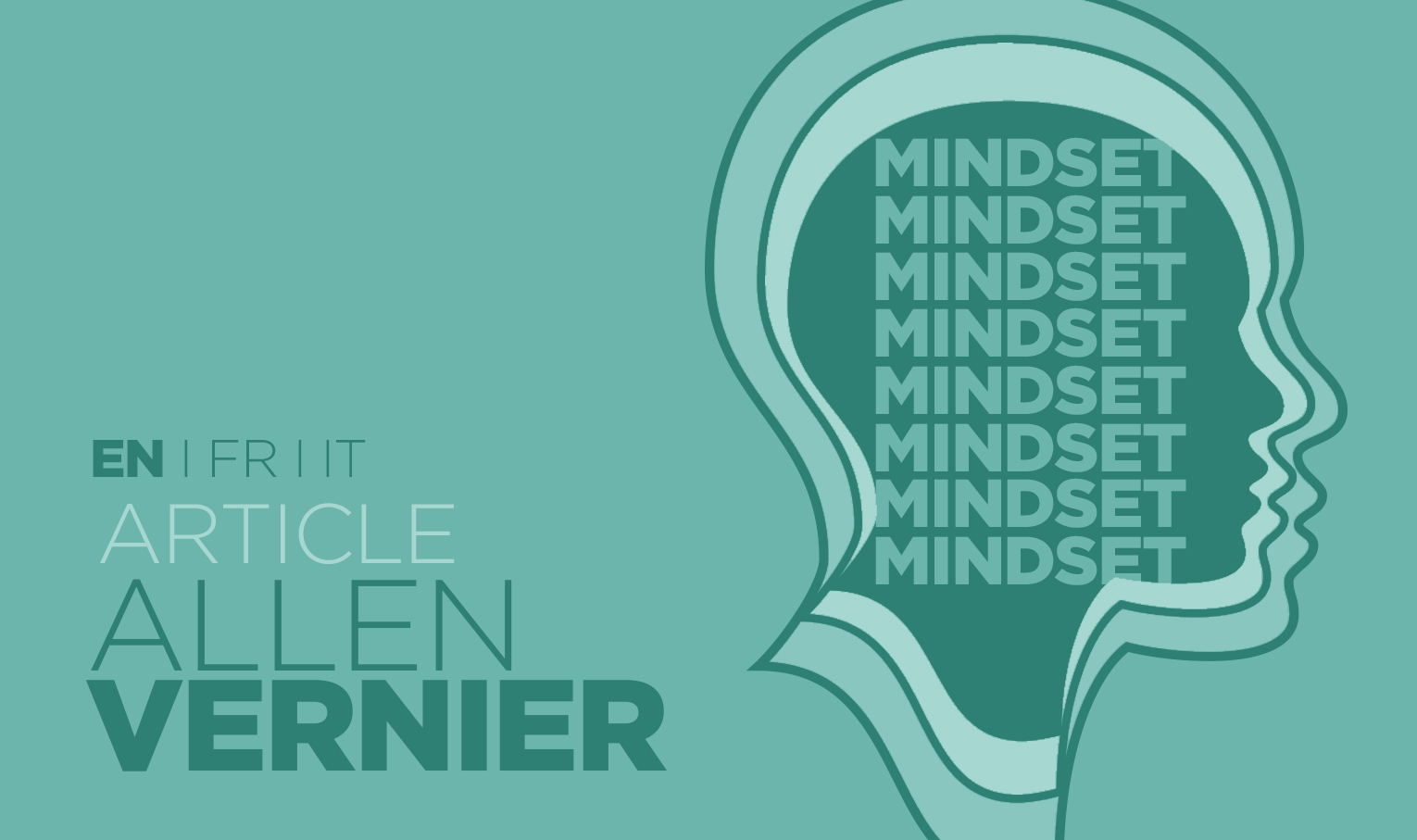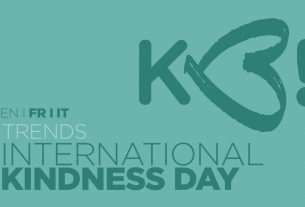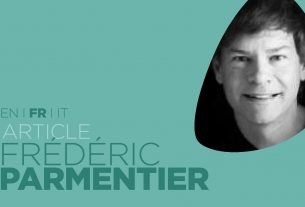We are often referring in our communications to a new and emerging mindset, that we have chosen at KINDNESSforBusiness to name KINDNESS. It is the counterpoint of the current dominating “command and control” (C&C) mindset[1]. Actually, we think that the KINDNESS mindset is rather an evolution of the C&C mindset than a whole revolution.
According to the spiral dynamics theory [2], humanity has already passed through at least 6 major changes and there is no point in judging the former ones because they are simply outmoded. In other words, this article doesn’t have the intent to arbitrate between the old and the new, even if we promote (and even advocate) the new one. We are also urging the reader to not judge the C&C mindset too severely because, despite its weaknesses, he served Mankind quite well and the new paradigm itself is not free from defects.
In this article, we will attempt to clarify the characteristics of the two mindsets and we would like to thank Gary Hamel and Michele Zanini [3] for the impressive work they have already done, which inspired us, and to whom we will freely refer.
The “command and control” mindset
Organizations have been designed on 3 main beliefs:
- a mechanistic vision of organizations composed of wheelworks and sub-assemblies and the idea that they can be permanently optimized through quality methods in a never-ending process. In this vision, human beings are unfortunately also a cog, a substitutable and optimizable resource,
- the Homo Economicus theory which explains that an individual only seeks to optimize his/her global remuneration in relation to his/her engagement, the belief that we cannot trust the human being is widely spread and admitted in our organizations. Thus, we control him.
- a conception of global business as a zero-sum game, a mentality in which what counts is to get the biggest slice of the pie that is the market and as fast as possible [4].
In the end, many leaders, driven by these three beliefs, see the human being as a resource. Of course, it is a thinking resource, and this ability is appreciated – even if this is another reason to strictly control it – and it is still substitutable and exploitable like any other one. The shift of vocabulary from ‘personnel management’ to ‘human resources management’ is certainly not trivial.
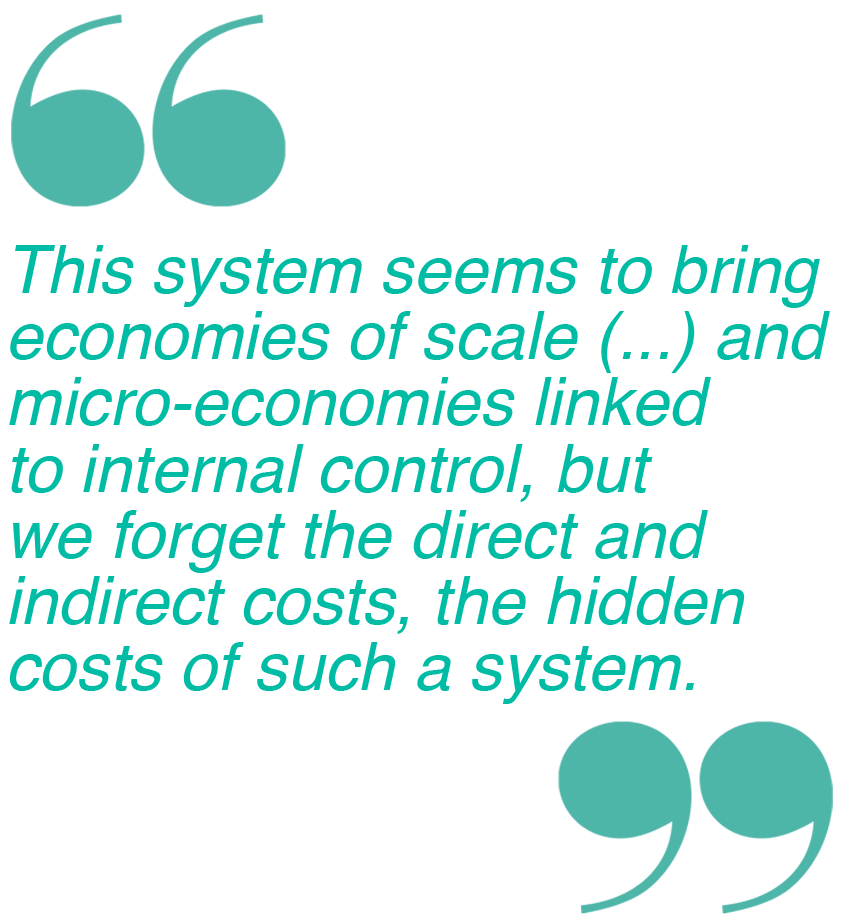
These three beliefs taken together have particularly negative collateral effects. Our organizations, as soon as they exceed a certain size (50 or 100 individuals), become bureaucracies. Besides the fact that bureaucracy tends to destroy the entrepreneurial spirit and therefore the capacity for initiative and innovation, it pushes the organization into silos. These silos have major effects on the exacerbation of struggles for power but also for the allocation of internal resources. Furthermore, the managerial system is designed as a highly verticalized pyramid with a limited number of people at the top and an army of internal controllers and micro-managers in the middle. This system seems to bring economies of scale (which is true to a certain extent) and micro-economies linked to internal control, but we forget the direct and indirect costs, the hidden costs of such a system. Finally, bureaucracy is globally synonymous with dehumanization, its rigidity leaving no room for the human being, for his singularity and therefore for his realization.
In addition to the omnipresence of the power and ego games already discussed in the previous point, the zero-sum game mentality brings additional competitiveness in an already competitive world. The permanent anxiety that is born from this reinforces the tendency to objectify others (treating others as objects or means), to depredate everything that can be considered as resources. It is interesting to note, for example, that the marketing discourse and more generally organizations’ wording, is imbued with military or war metaphors: the target, the barriers, the forces (in presence), the conquest, the elimination of the competitor and so on,…
In the illustration below [5], we can note that the individual is at the center. While thinking about the very fashioned and appreciated human-centricity, it seems to be very fine. But it’s a decoy. It is the institution that uses the individual as a medium to obtain a result.
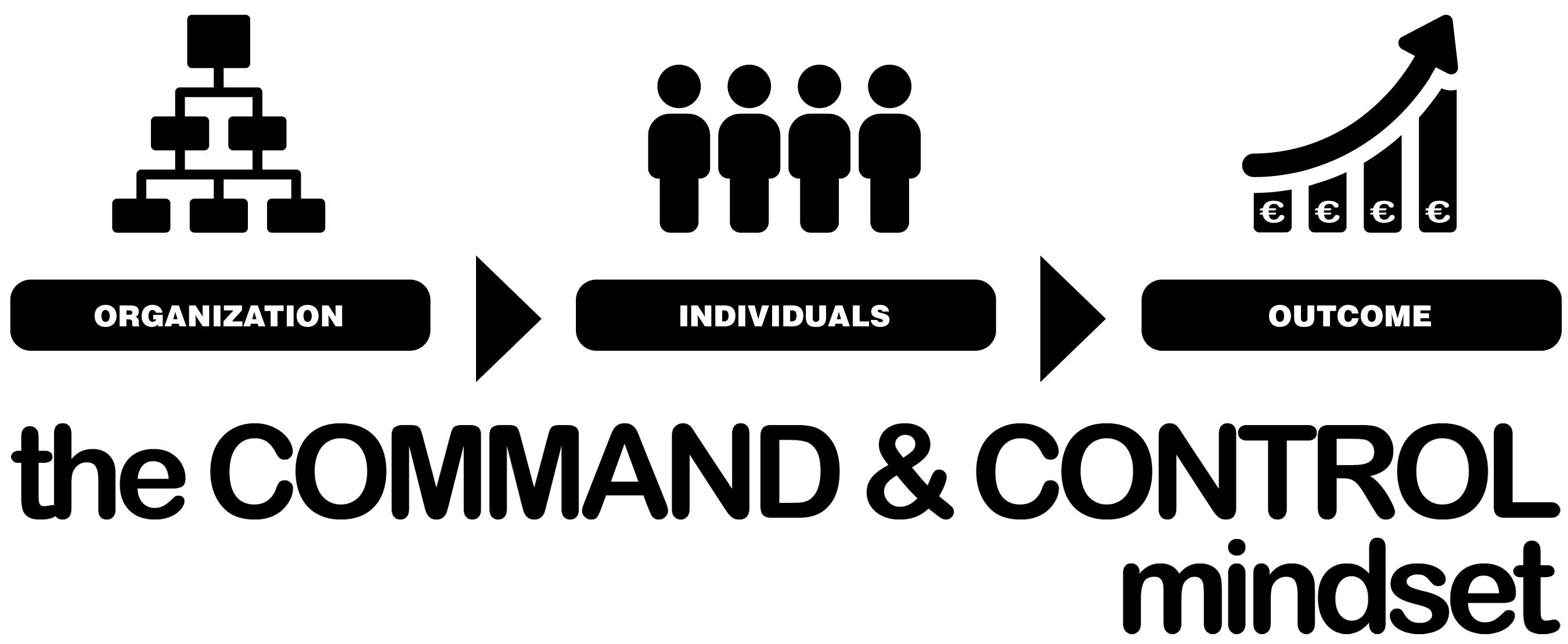
The emerging mindset
In the other illustration below [6], the individual is at the center but also at the beginning and at the end. A group of individuals meets in an institution to contribute to common prosperity. This prosperity can still be read throughout the bottom-line results but has to be in favor of communities. Our organizations, our institutions have to be rethought to be at the service of humanity, our projects have to be made by, for, and with people. They have to be definitely purpose-driven.
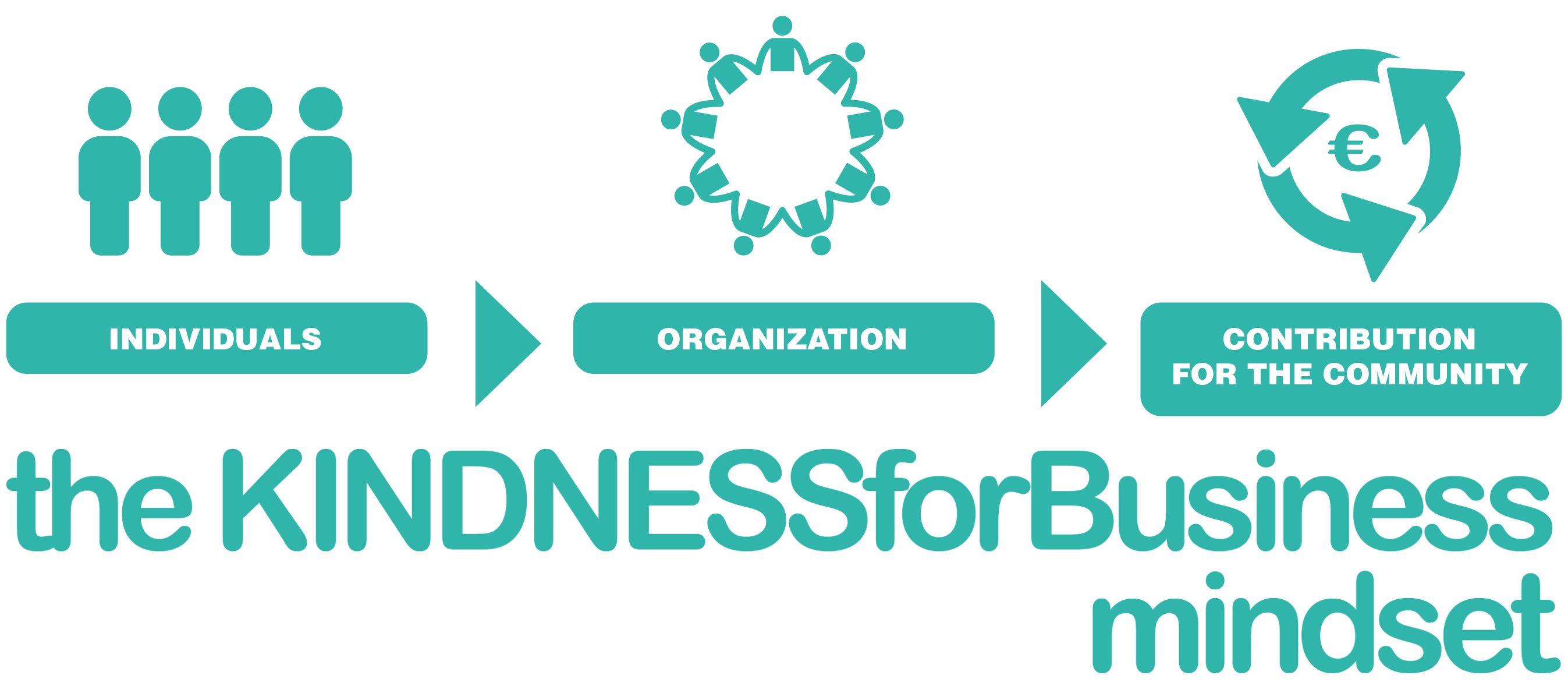
To a certain extent, we observe a never-ending movement toward de-humanization. There is a huge paradox between defending the values of democracy and, in the same time, neglecting what is the main wealth of our organizations, our talents, our ideas. We can continue to make strong statements concerning inclusion and a wonderful collective mission, or we can start to really do it on the ground, in the workforce. There is no doubt that people are really sick of a form of inconsistency that results sometimes in a toxic feeling of absurdity.
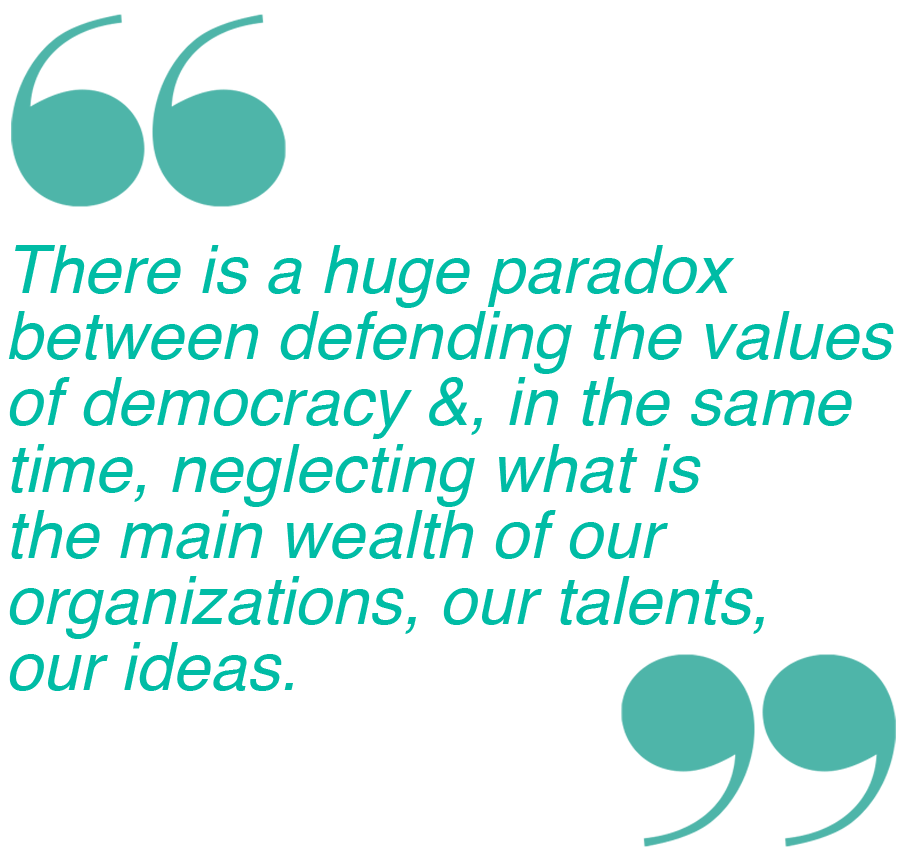
It’s time to commit to a really human-centric or just humane workplace, for a redesign of our capitalism ground rules to encompass more stakeholders.
At KINDNESSforBusiness we name the emerging mindset, the KINDNESS paradigm. KINDNESS is simply the exercise of one’s power and presence on behalf of others. Power is our ability to take initiative, to influence, and to have an impact. The presence rests on 3 pillars: consciousness, authenticity, and care. KINDNESS is genuine and abundant since everyone is able to find and use these two levers: power and presence. They are like muscles, they need to be trained and reinforced. But I repeat we have these two forces for good at our disposal. A kind person is simply someone who leverages them to help us or to help the causes that are close to our hearts.
Of course, this definition only partially helps to understand what is KINDNESS in our organizations. Could we define a KIND leader? What does such a human-centric manager does in his/her day-to-day professional life? What is he/she looking for? What are the values that drive his/her actions? A KIND leader would be someone who seeks to develop a series of four practices:
- The first practice can be called ’empowerment’. But I prefer ’emancipation’ and I will explain why. Empowerment is about increasing the decision-making autonomy of our subordinates and their capacity for initiative. Emancipation goes a step further. It is about making them feel legitimate to act, to decide but also to be wrong. It is also to help them, in their quest for meaning, to realize themselves.
- The corollary is about developing accountability, which consists in making workers responsible for the consequences of their decisions. We understand why this corollary is needed because emancipation without accountability leads to the chaos of egoism and inconsistency.
- The third one is about creating a feeling of safety, creating a safe and serene work environment in which there is freedom of speech, the right to make mistakes, and greater transparency and inclusion.
- Finally, the KIND leader, with the help of emancipation and feeling of safety, can look for the emergence of collective intelligence. This emergence requires to lead by example, to stop thinking from above but to start to think from within, with a peer-to-peer approach even if anyone has a different role. It also implies a more organic and more agile organization and distributing authority and knowledge.
It will be difficult for our KIND leader to implement these practices if, in his/her inspiring leadership, he/she does not succeed in embodying and manifesting some values, including:
a. Trust: the feeling of assurance, of security that inspires the presence of others at his/her side. And, contrary to what we often hear, trust excludes control. Trust honors the person who receives it and in 95% of cases, it is not betrayed or deceived. It is only when deceived that we can then enter into a dynamic of control.
b. Authenticity: the ability to establish honest and open relationships with others.
Without these two values, it is practically impossible to hold KINDNESS in the long term. But the list is a bit longer with:
c. Altruism: putting the needs of others first;
d. Humility: openly acknowledging one’s own limitations and mistakes;
e. Courage (to be nonconformist enough): the ability to challenge institutional norms in the interest of supporting others;
f. Forgiveness: demonstration of empathy and willingness to forgive.
KINDNESS is a muscle and, willing or not, any leader will need it in the incoming future
As said, KINDNESS is a muscle. You may not be convinced that a new mindset is emerging and that KINDNESS is its key and honestly, I can understand it. I had the same doubts as you did 6 or 7 years ago. But if we are right, you could be unprepared for a quick and massive shift, and a good leader has always to be prepared to face the future. He/she can be (and he/she is) vulnerable but what the individuals who are following him/her do wait for, is a capacity to foresight.
For this reason and also in order to finish convincing you, I am currently writing a second article to be published next month.
Until then, I would believe that I can count on you! Do not remain passive or waiting. Observe weak signals in your environment that could show that a radical change is already underway. Be aware of all the times you have been truly KIND; seize also every opportunity to express your gratitude. Identify all the times when you could have helped your employees to emancipate themselves or communicate information that you have kept to yourself. Ask yourself if there are not some inoperative or unfair rules that you could adjust. Now you have initiated to train your muscle…
[1] It is the commonly admitted wording, according to the literature.
[2] Don E. Beck and Christopher C. Cowan, Spiral Dynamics: Mastering Values, Leadership and Change, Blackwell Publishers (1996).
[3] Gary Hamel and Michele Zanini, Humanocracy, Creating Organizations as Amazing as the People Inside them (2020).
[4] An interesting reference could be found in the thesis of a strong supporter of stakeholder capitalism. See Alex Edmans, Grow the Pie, how great companies deliver both purpose and profit, Cambridge University Press (2020).
[5] This illustration is directly inspired by the aforementioned work of Hamel and Zanini.
[6] This illustration is freely inspired by the aforementioned work of Hamel and Zanini.




